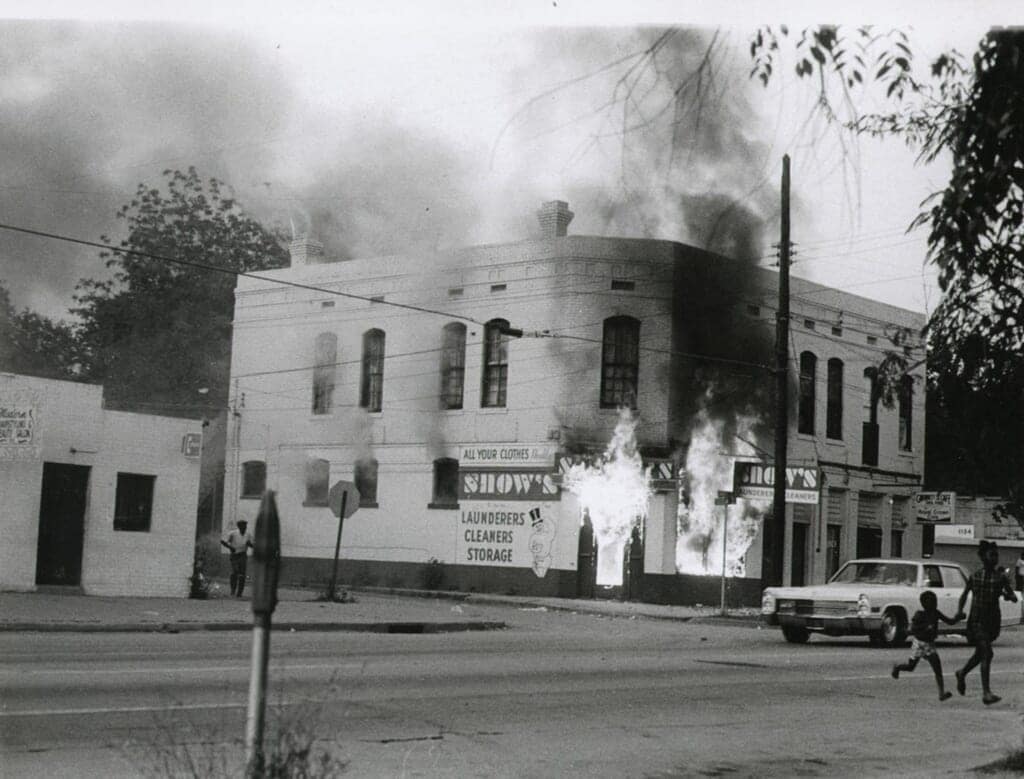DOJ investigates murders of six Black men during the 1970 Augusta Riot, seeks witnesses
About 1,000 residents participated in the rebellion and 100 blocks of neighborhoods and businesses were vandalized. But more than 50 years later, residents say not much has changed in Augusta, Georgia.
The Department of Justice is investigating the 1970 jailhouse death of 16-year-old Charles Oatman and the murders of six men during a riot that followed in Augusta, Georgia. According to a report from WJBF, the investigation was launched just days before the anniversary of the tragic incident.
The riot happened after Oatman was found dead in the Richmond County Jail following his arrest for allegedly shooting his 5-year-old niece. There were reportedly deep gashes and cigarette burns on Oatman’s body and a medical examiner later found that there was water in his lungs and that he died from drowning.
NPR noted that Oatman was intellectually disabled and weighed about 100 pounds. The report also said that the shooting of his niece, JoAnna Robinson, was accidental.
The Augusta Riot, seen here on May 11, 1970, lasted two days and 1,000 residents participated in the rebellion in which more than 100 blocks of neighborhoods and businesses were vandalized. (Photo: Augusta Chronicle-USA TODAY NETWORK)
According to NPR, the riots lasted two days and 1,000 residents participated in a rebellion in which more than 100 blocks of neighborhoods and businesses were vandalized.
The six men who were killed were all shot and, according to Dr. Mallory K. Millender, who was a young faculty member at Paine College during the riots, “not only were they killed, but they were also shot in their backs, and not only were they shot in the back — all of the white police officers that shot them in their backs were promoted.”
One of the officers involved in the event was even named officer of the year.
Millender said a new investigation could bring justice to the families of the victims. The Department of Justice is seeking further information from witnesses and from others who remember the deadly riot.
Augusta had a history of systemic racism at the time of the riots. According to the 1960 U.S. Census, only 20% of African American adults had high school diplomas, and many Black neighborhoods lacked sewerage and water. After the riots, there were talks and a few agreements to improve the Black neighborhoods —however, the sentiment was short-lived.
Many natives of the southern city told NPR that little has changed in 50 years — particularly as related to police violence. Dr. John Hayes, a history professor at Augusta University, said that the open investigation into what he calls a “massacre” is necessary.
“Obviously, we’re 52 years removed from the incident, but it gives a glimmer of hope that even at this late date, there could be some possibility of actual justice through the official channels,” Hayes said, per WRDW.
Hayes is part of the 1970 Augusta Riot Observance Committee that acknowledged that Black people were “convicted for different parts of the rebellion. Zero white people were convicted,” Hayes said.
TheGrio is FREE on your TV via Apple TV, Amazon Fire, Roku and Android TV. Also, please download theGrio mobile apps today!
The post DOJ investigates murders of six Black men during the 1970 Augusta Riot, seeks witnesses appeared first on TheGrio.

